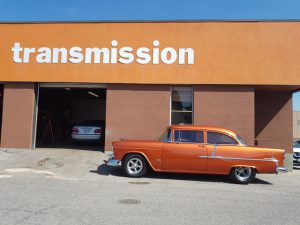Car Frame Damage: What You Need To Know
Getting a damaged frame is the last thing you’d want to happen to your car. Nonetheless, it’s important to know what it entails, so you can address it properly.
What is a car frame?
The car frame is the structural support system of any vehicle. It is usually made of sturdy metal, which allows it to function as the car’s foundation while protecting passengers in the event of an impact.
A car frame is different from the chassis, which acts as the vehicle’s skeletal framework. Most mechanical car parts such as the tires and steering are attached to the chassis. But all car parts – including the chassis – are attached to the mainframe.
The two most popular frames include the unibody car frame, which is more common in the United States, and the ladder auto frame, also known as body-on-frame.
What is a crumple zone?
Crumple zones are safety features that are built into unibody vehicles. They are naturally dented parts of the frame, which are specially designed to bend and fold during a collision in order to better absorb impact.
These crumple zones are strategically located on the car’s front fascia, the quarter panel, and the rear bumper. By absorbing most of the impact, the rest of the vehicle is spared and the risk of injury is reduced.
Once a crumple zone is activated, the car’s safety is already compromised. Mechanical problems may also appear later on.
What classifies as a damaged car frame?
When the structural integrity of a car frame has been compromised, it is already considered damaged. This damage can occur from a collision or a bad repair job, and may not always be obvious to the naked eye.
A car with a damaged frame can still drive like a normal vehicle. This is especially true if the damage is minimal and most of the rails are intact. But if the crumple zones have already been activated, or if there are any other major dents to the frame, the next car crash may result in serious injury.
How can I check for a damaged car frame?
The best way to tell is to have your car checked at the local auto body repair shop. However, there are some signs you can look out for:
- Saggy or twisted frame. If the car is unstable during turns or when driving at high speeds, the frame around the coils and tires may be damaged.
- Sway damage. This is common if the vehicle sustained damaged in a corner. It causes the car to lean toward one side, and have difficulty maintaining a straight line. Other signs of sway damage include transmission problems and shaking while driving.
- Mashed frame. It typically occurs in cars that encountered a head-on collision or got rear-ended by another vehicle. The frame crumples into itself and shows visible signs of damage. Watch out for wrinkles, dents, and other distortions on the hood, fenders, rails, and frame horns.
Can I sell a car with a damaged frame?
It really depends on whether you will find someone who’s willing to purchase your vehicle. With a damaged car frame, expect its resale value to be 30 to 70% less than the car’s value.

